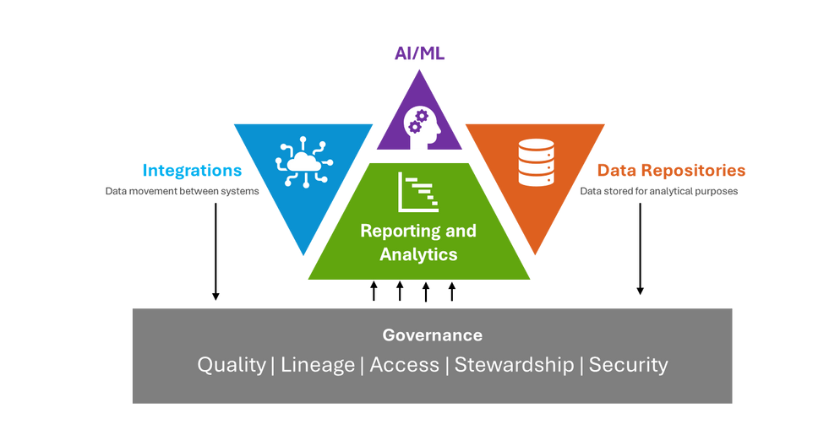The Data Problem in Higher Ed
Principal Analyst

For higher education leaders, the speed and criticality of strategic decisions that must be made to ensure institutions’ long-term health and viability are unrelenting. However, many leaders we speak with do not have the trusted data and analysis they need to make these decisions confidently.
The problem is that most institutions do not have the processes, structure, or technologies in place to provide analysis at the pace they require to tackle curriculum planning and financial planning while also focusing on student and employee retention.
Institutions are also wondering about and experimenting with generative AI as the market rationalizes real product offerings over the coming year. These discussions are also reigniting efforts to leverage machine learning and more traditional AI that the vendor community has been working on for some years.
Higher Ed’s Data Hygiene and Data Governance Problems
Our reality is that higher education has suffered from a lack of quality decision-making data for decades. Over the past few years, the cumulative stresses on the industry and individual institutions have forced them to face this reality: Our data hygiene is terrible.
Institutions increasingly recognize they need to take action, but which one?
- Implement data governance?
- Stand up a data warehouse?
- Use a CRM to consolidate data?
- Hire a chief data officer?
- Buy analytics tools?
- Implement generative AI?
It is a complex and confusing path forward for institutions where we often find siloed and manual data processes, a lack of good integration, a variety of products and tools, and virtually no effective data governance.
The Makings of a Fractured Data Environment
Behind the current data problems in higher ed are years of neglect and underinvestment. Institutions have focused on adding and adapting applications to improve specific business processes while often ignoring the data those processes produce. This has led to an even more highly fractured data environment that involves scores of applications.
“Reporting” conversations often come at the end of the design process for technology implementation—not at the beginning—and they are generally operational in nature. Strategic decision-making criteria should be the first conversation when adopting new technology, not the last.
If there is anything to learn from the many data-centric companies around the globe today, it is that the data is a product. That data can ethically serve the institution’s mission if captured correctly and securely, maintained with quality, and served up to decision makers in flexible and meaningful ways.
So it’s a technical problem, right? Emphatically: No. (Does a great laptop make a great developer? Nope.)
Can I solve it by buying a product? Emphatically: No. (Can a city solve major traffic congestion by adding a traffic light? Or even by adding a highway? Not by themselves, no. Could these be elements of the solution? Maybe.)
Addressing the Data Management Problem in Higher Ed
Data maturity is an institutional problem, and maturing data management requires the attention and focus of senior leaders, technology teams, institutional research, and business and academic leaders to improve the generation, management, analysis, and consumption of it effectively.
The scope of such efforts includes a broad set of processes, disciplines, and technologies. Data management comprises data governance (a complex discipline itself), data integration, data repositories (e.g., data warehouses and data lakes), and analytics and reporting tools and processes.
Data Management Scope

Tackling the data management problem is a long-term activity (a program), not a single project where a single problem is “solved.” Creating a structure that aligns critical strategic questions to the buildup of data management capabilities can organically create and develop maturity with institutional data. These issues cannot be resolved with a simple fix, but also do not require decades of committee meetings to “define all the data” or a massive data warehouse at the beginning.
Higher education leaders must be focused on a long pathway to solving the structural issues in their processes, organization, culture, and technology to enable data insights while solving the critical data-related problems of the present. This focus has never been more critical than at the current time, and it may be the key to long-term institutional success in retention, program offerings, hiring strategies, and many other forward-looking questions.
You May Also Like
Categories
Share Article:
